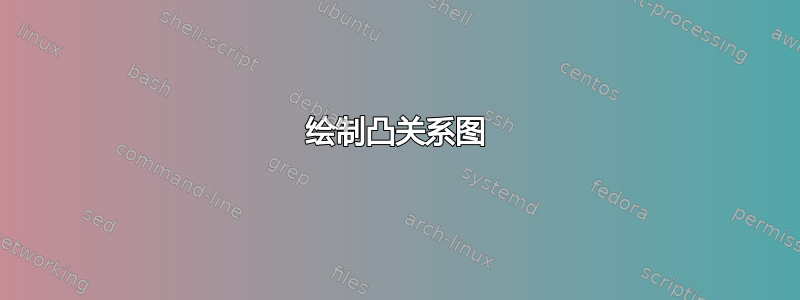
答案1
因为你想要tikz-cd:
\documentclass{article}
\usepackage{tikz-cd}
\usepackage{amsmath}
\begin{document}
\[
\begin{tikzcd}[
row sep=large,
column sep=large,
arrows={Rightarrow}
]
\text{strict convexity}\ar[r]\ar[d,"\text{(under differentiability)}" description] & \text{convexity}\ar[d,"\text{(under differentiability)}" description] \\
\text{strict pseudoconvexity}\ar[d]\ar[r] & \text{pseudoconvexity}\ar[d] \\
\text{strict quasiconvexity}\ar[r] & \text{quasiconvexity} \\
\end{tikzcd}
\]
\end{document}
答案2
答案3
您可以使用以下简单的方法获得该图表tabular:
\documentclass{article}
\usepackage{amsmath}
\usepackage{makecell}
\begin{document}
\renewcommand{\arraystretch}{0.8}
\begin{tabular}{r@{}c@{}l}
strict convexity & $\implies $ & convexity \\
\makecell{$\Vert$} & & \makecell{$\Vert\qquad$} \\
\multicolumn{1}{r@{}}{\footnotesize (under differentiability)} & & \multicolumn{1}{@{}l}{\rlap{\footnotesize (under differentiability)}}\\[-0.4ex]
\makecell{$\Downarrow$} & & \makecell{$\Downarrow\qquad$} \\
strict pseudoconvexity & $\implies $ & pseudoconvexity \\[-0.4ex]
\makecell{$\Downarrow$} & & \makecell{$\Downarrow\qquad$} \\
strict quasiconvexity & $\implies $ & quasiconvexity
\end{tabular}
\end{document}
答案4
这是您想要的草图。箭头在 \draw 标签中定义,因此您可以在其中的某处更改样式。祝您好运!
\usepackage{tikz}
\usetikzlibrary{shapes,arrows}
\usetikzlibrary{positioning}
\begin{tikzpicture}[thick]
\node(sc){Strict Convexivity};
\node[below = 1cm of sc](ud){(Under differentiability)};
\node[below = 1cm of ud](sp){strict pseudoconvexivity};
\node[below = 1cm of sp](sq){Strict quasiconvexivity};
\draw[-latex] (sc.south) -- (ud.north);
\draw[-latex] (ud.south) -- (sp.north);
\draw[-latex] (sp.south) -- (sq.north);
\node[right = 4cm of sc] (c){Convexivity};
\node[below = 1cm of c](ud2){(Under differentiability)};
\node[below = 1cm of ud2](p){strict pseudoconvexivity};
\node[below = 1cm of p](q){Strict quasiconvexivity};
\draw[-latex] (c.south) -- (ud2.north);
\draw[-latex] (ud2.south) -- (p.north);
\draw[-latex] (p.south) -- (q.north);
\draw[-latex] (sc.east) -- (c.west);
\draw[-latex] (sp.east) -- (p.west);
\draw[-latex] (sq.east) -- (q.west);
\end{tikzpicture}
节点
[低于 = sc 1cm] 将此节点定位在标记为 sc 的节点下方 1cm 处
(ud)将当前节点的标签设置为ud
{(在可微分性下)} 将当前节点的文本设置为“(在可微分性下)”
\node[below = 1cm of sc](ud){(Under differentiability)};
线条
这将从标记为 c 的节点的底部(南)到标记为 ud2 的节点的顶部(北)绘制一个箭头。
\draw[-latex] (c.south) -- (ud2.north);







